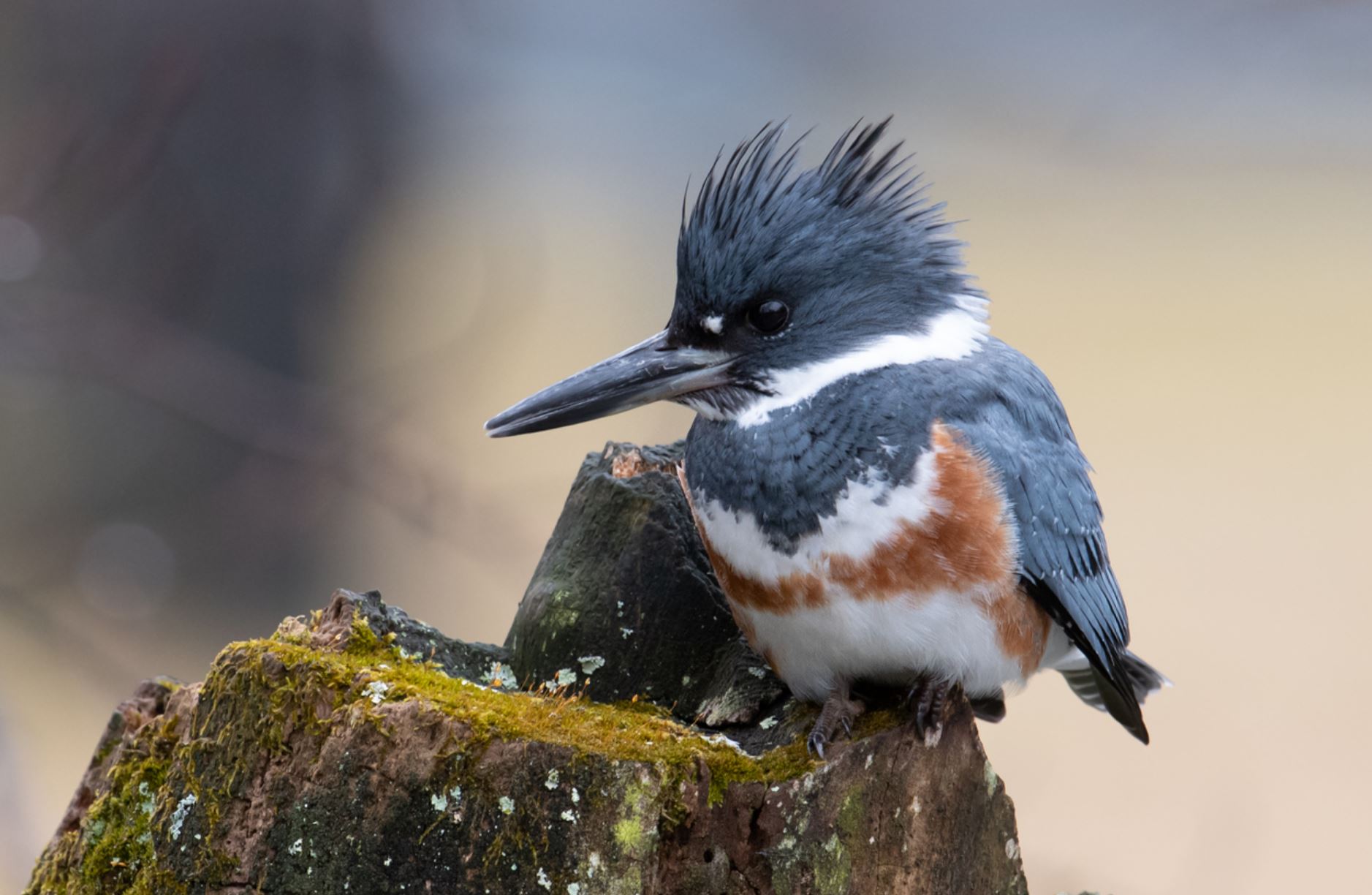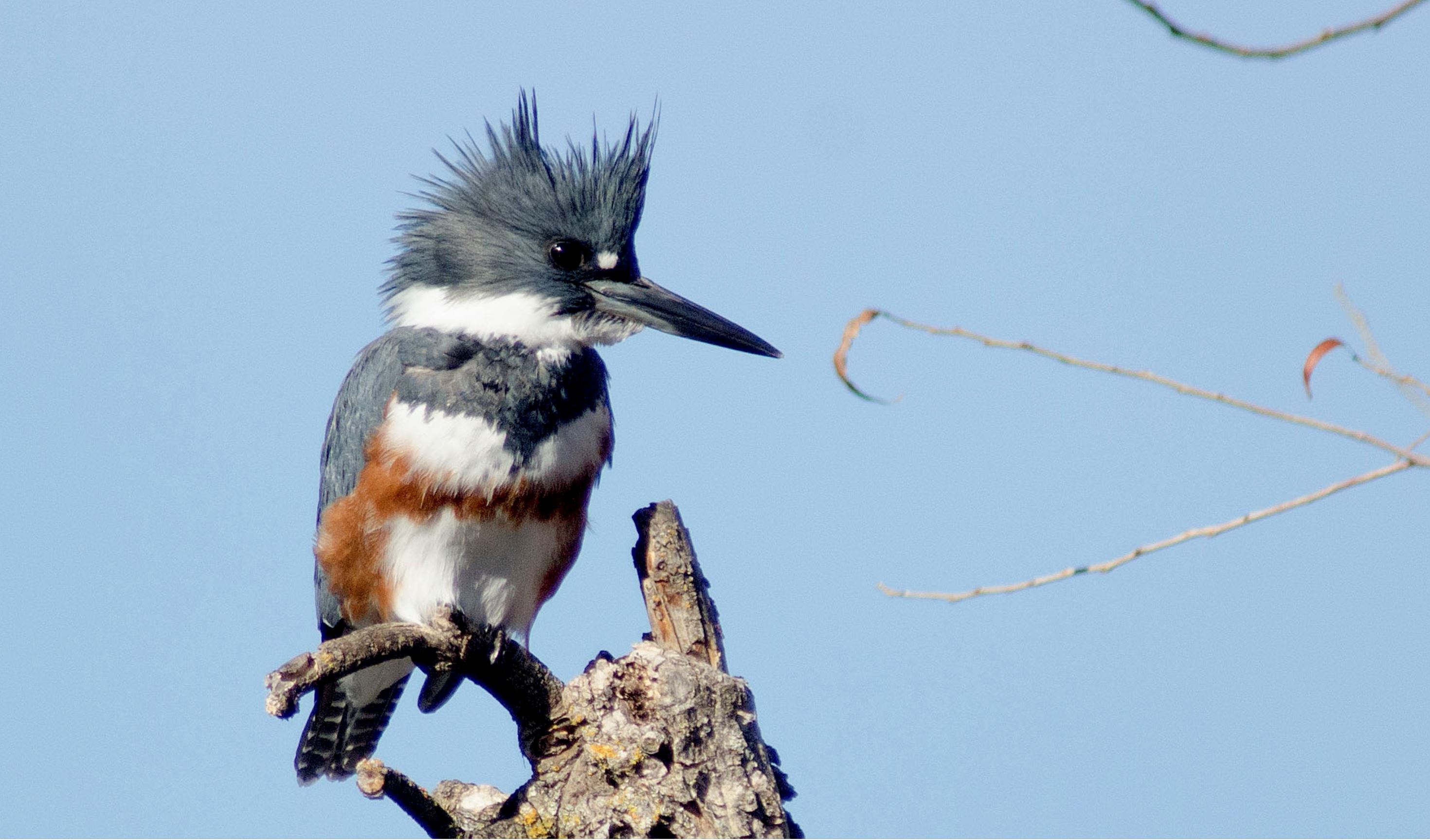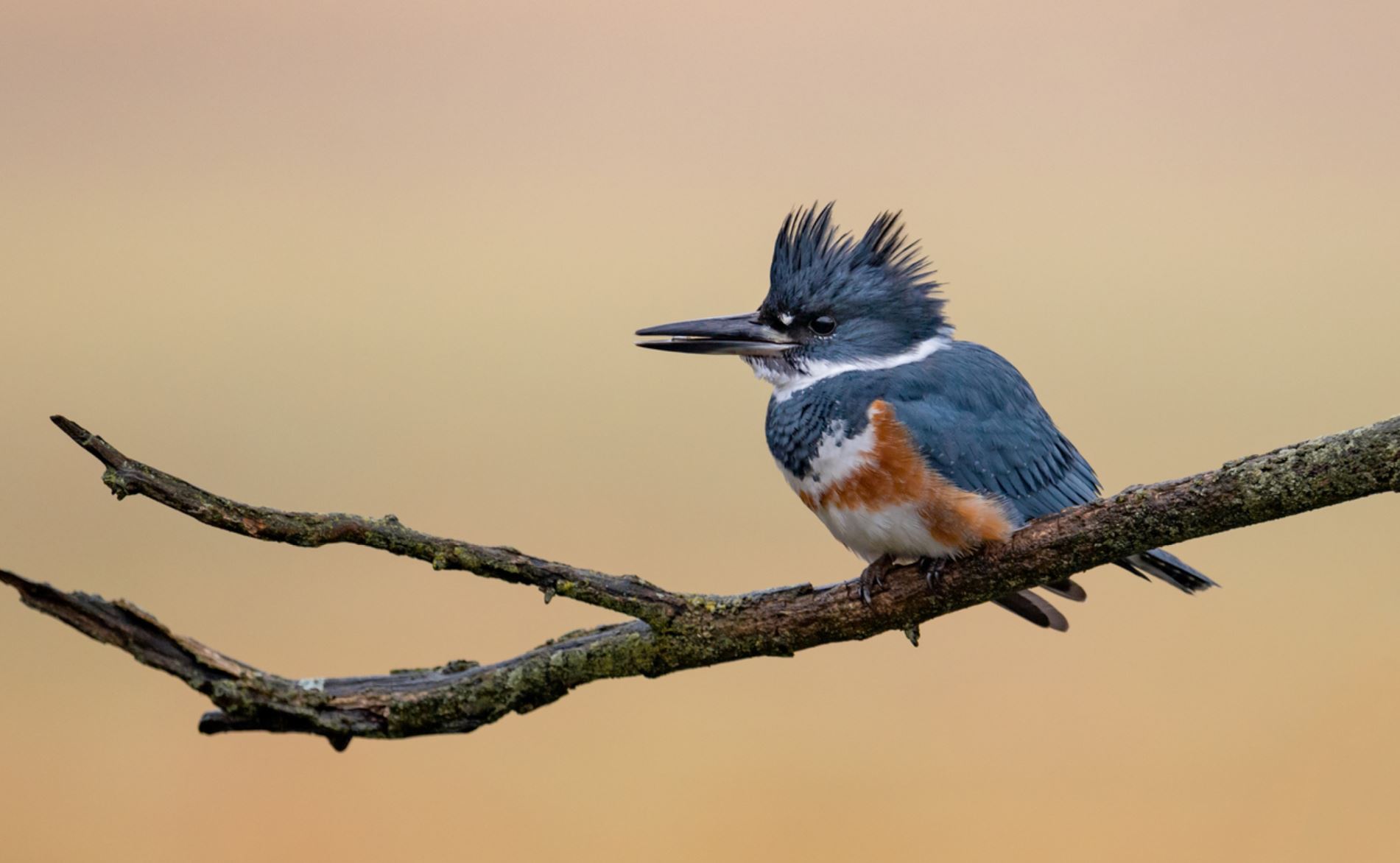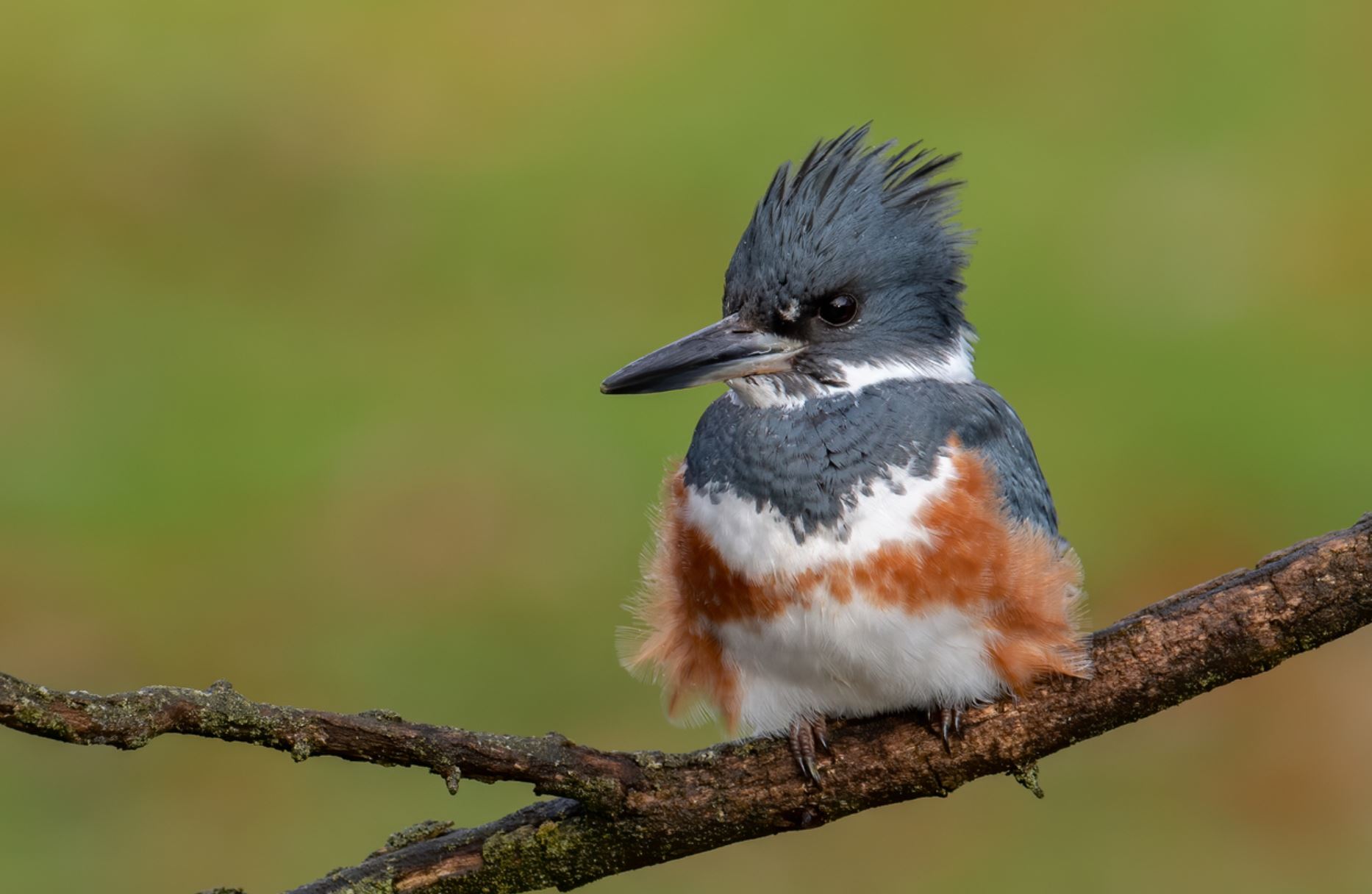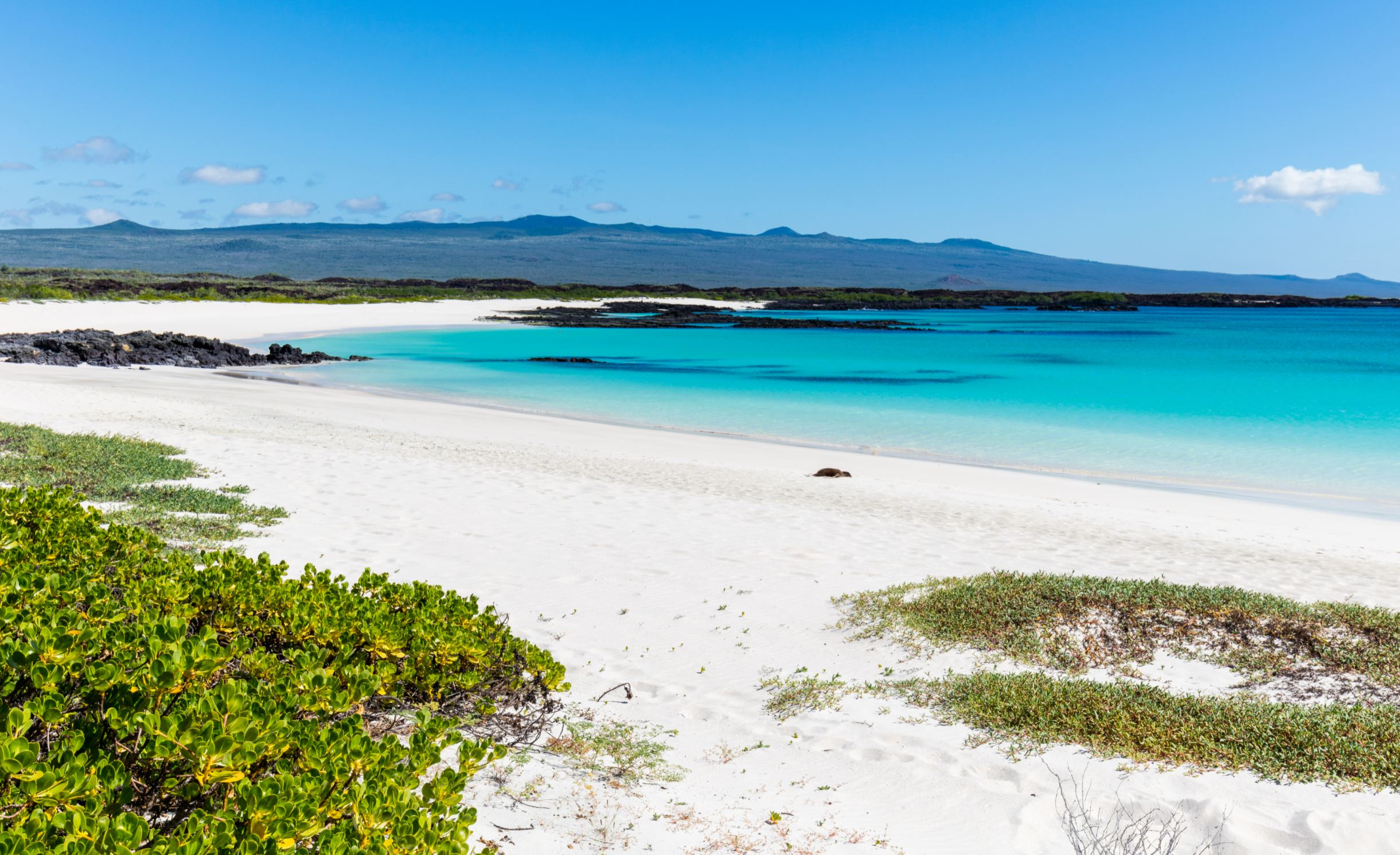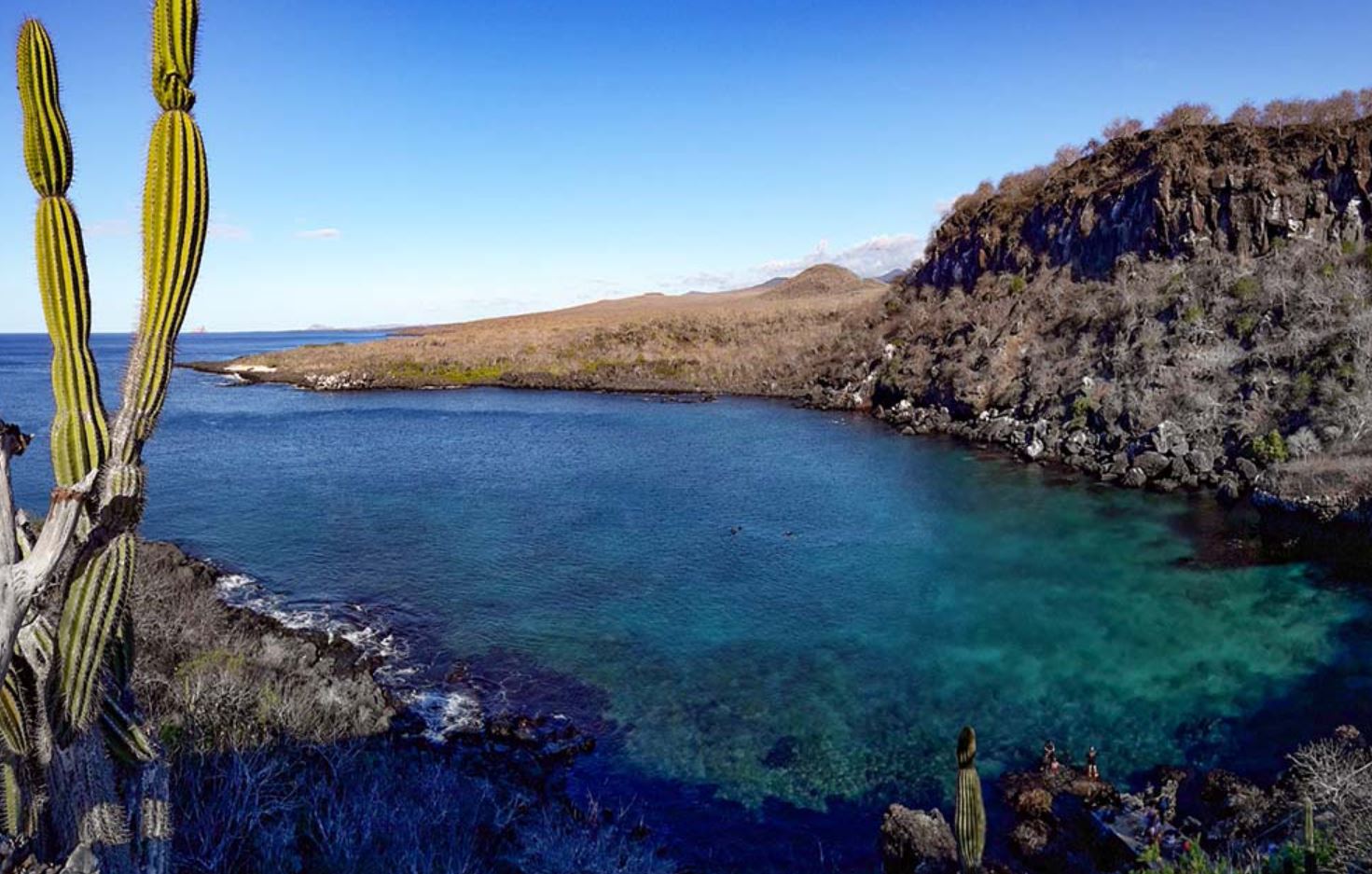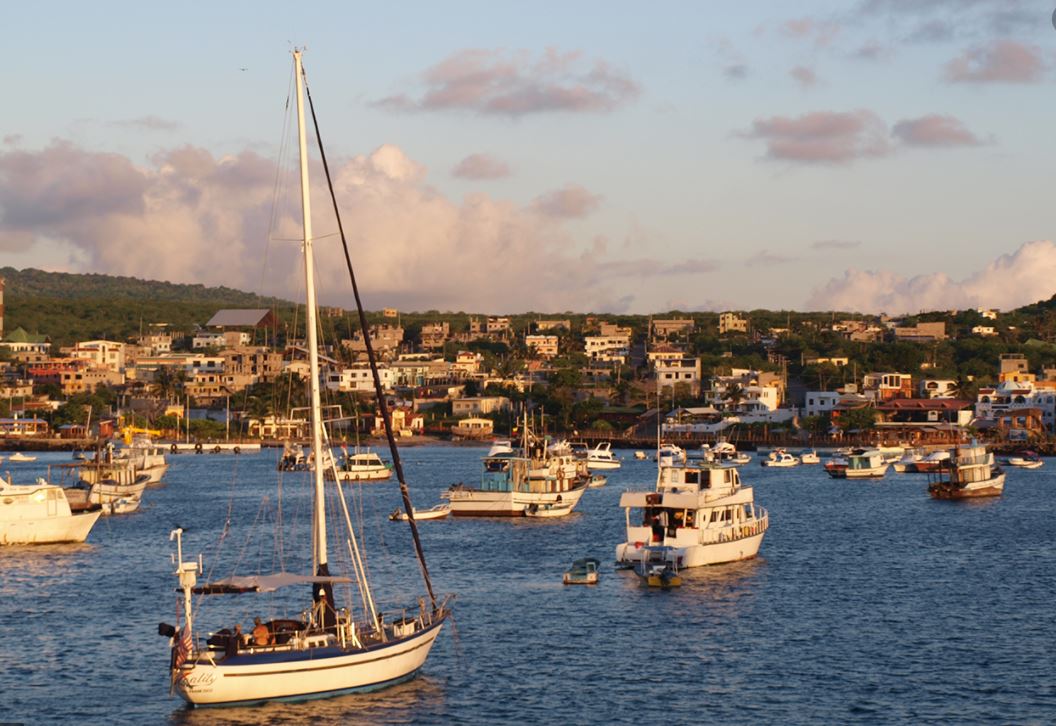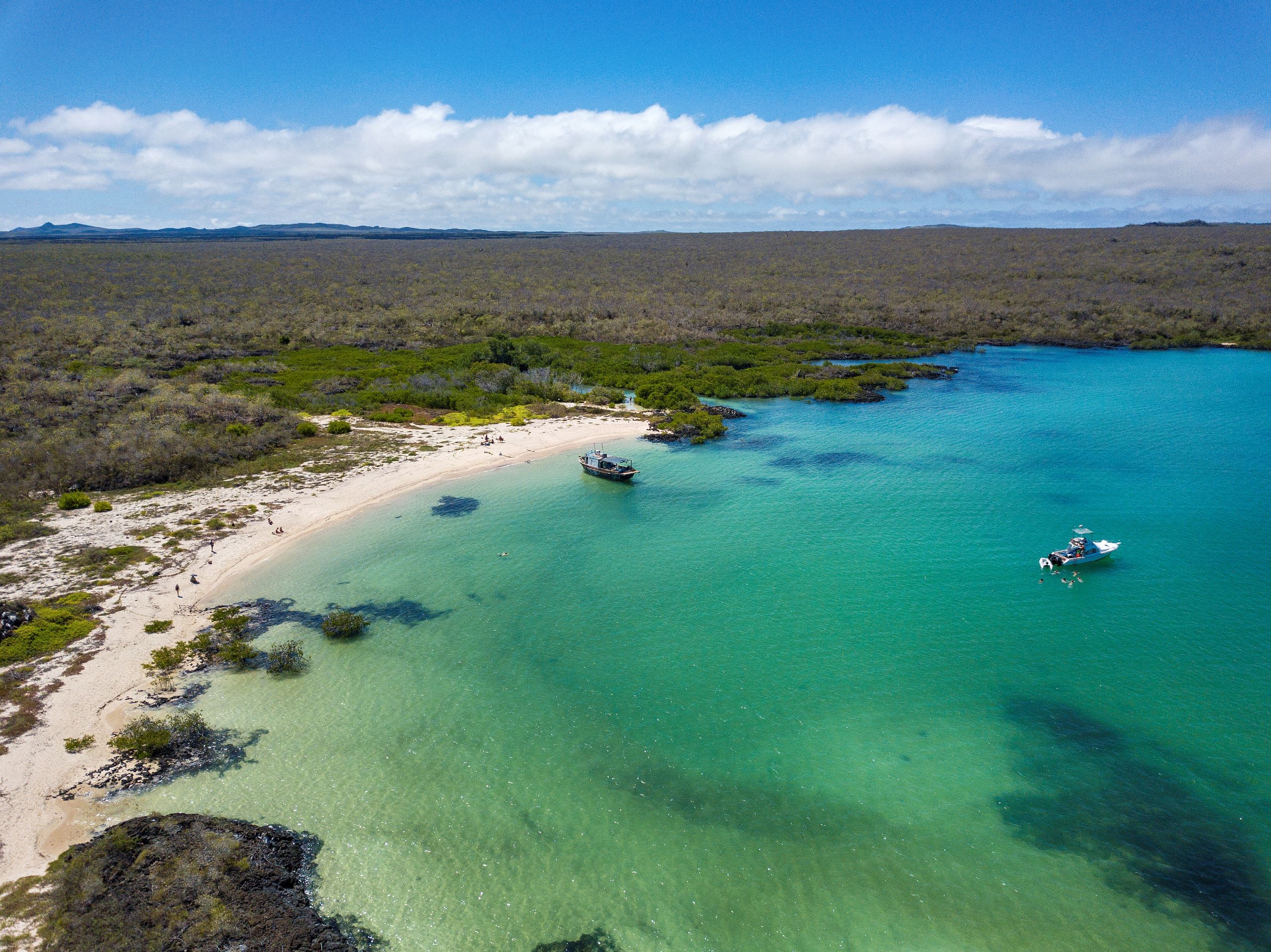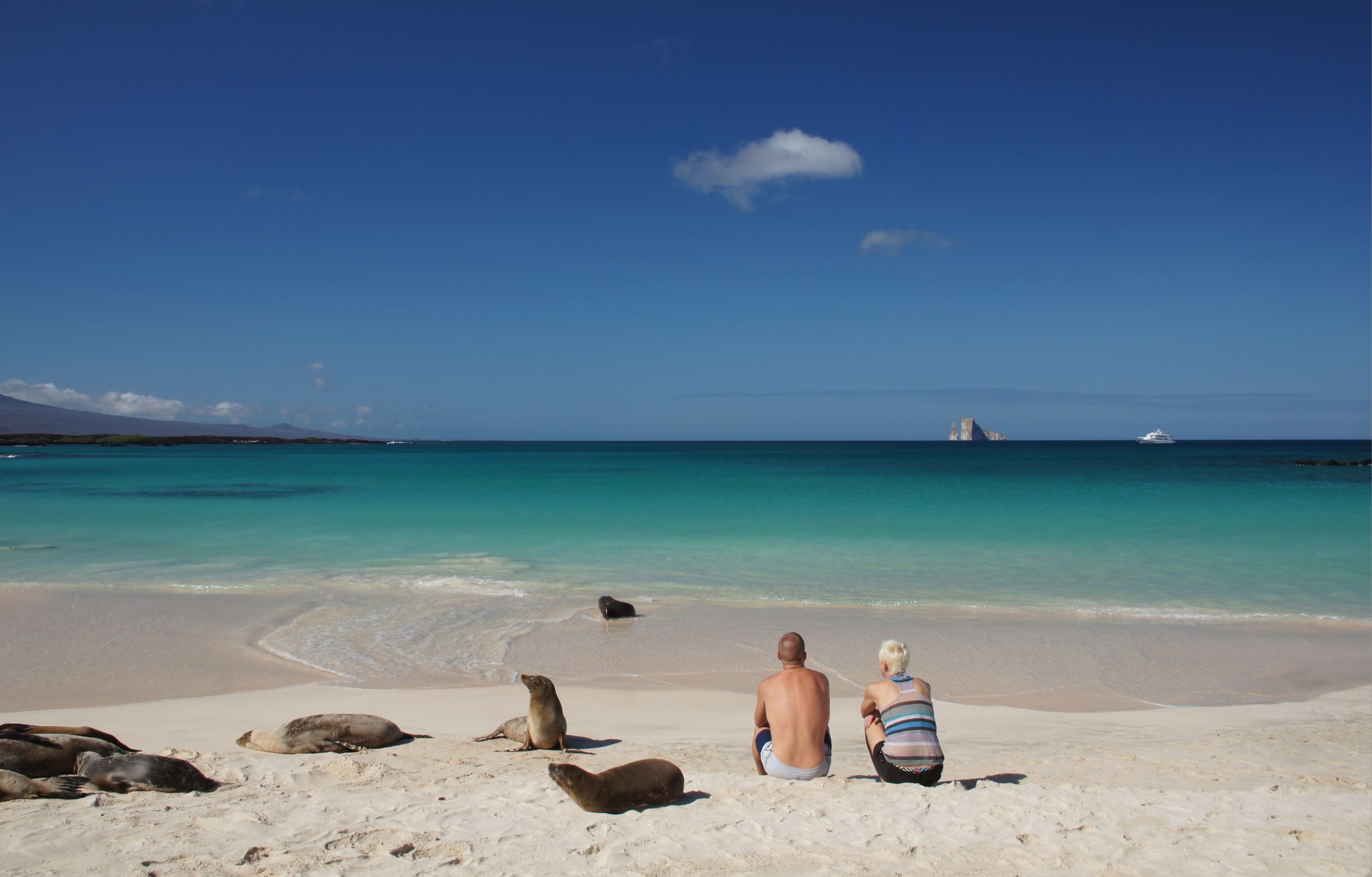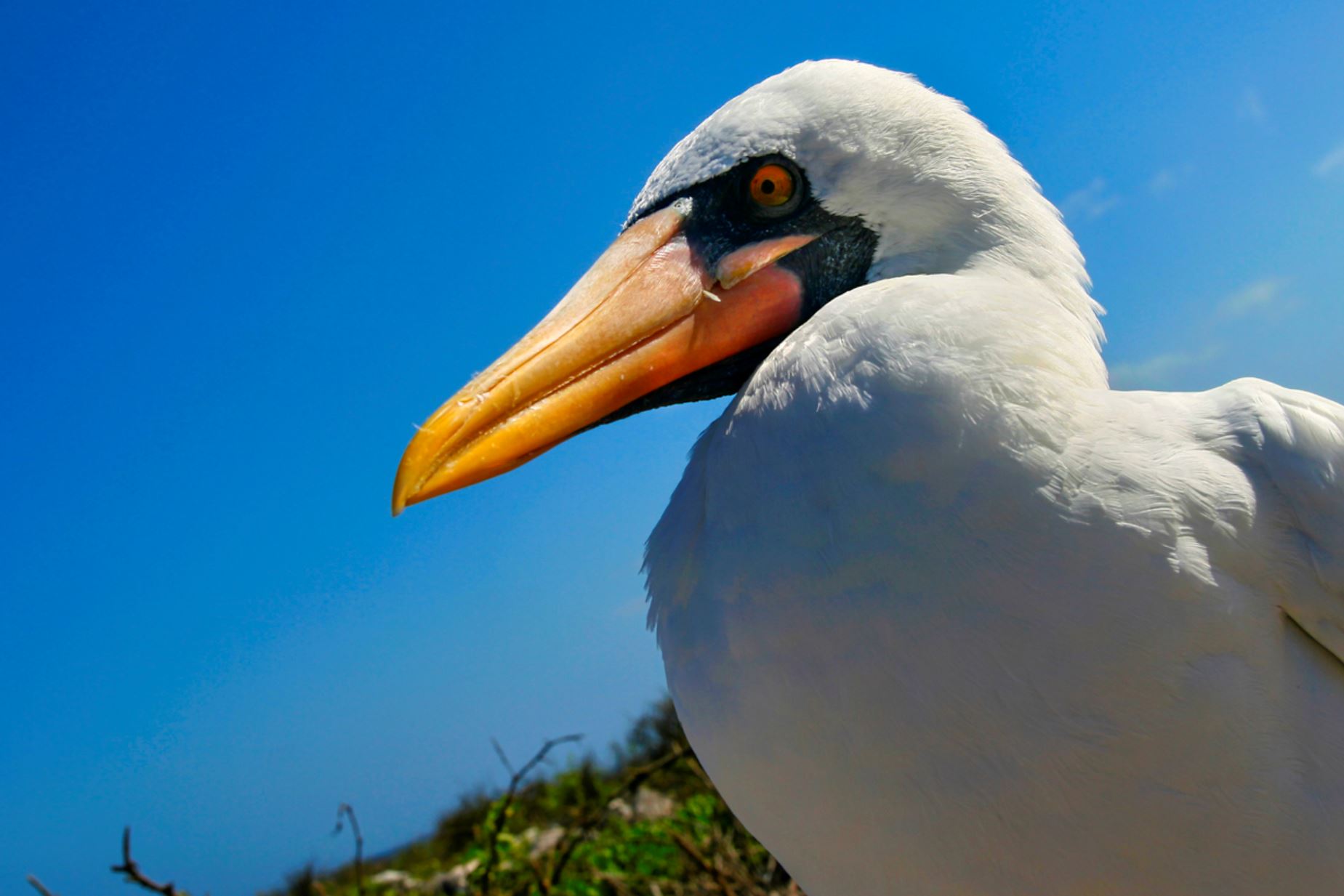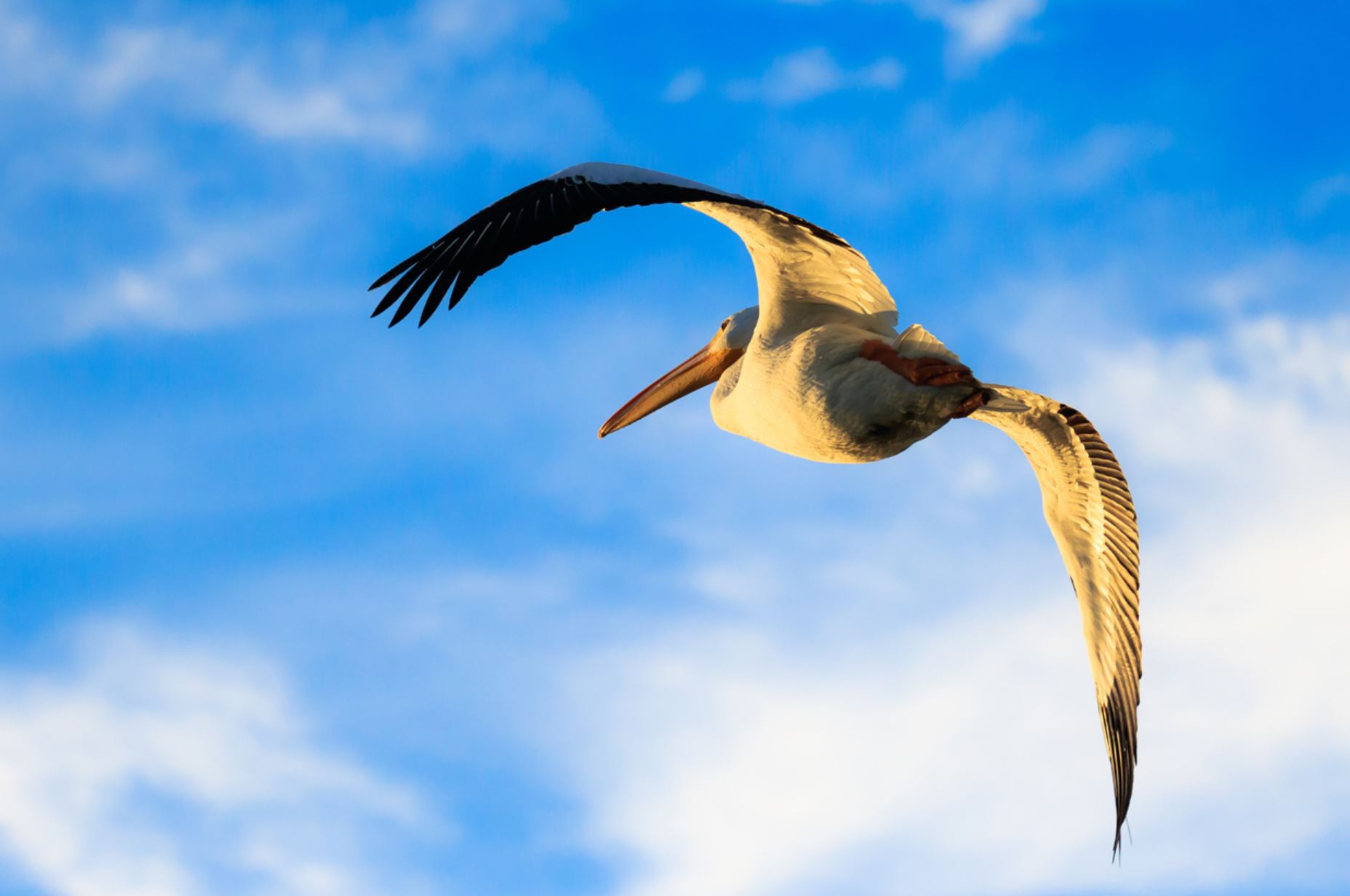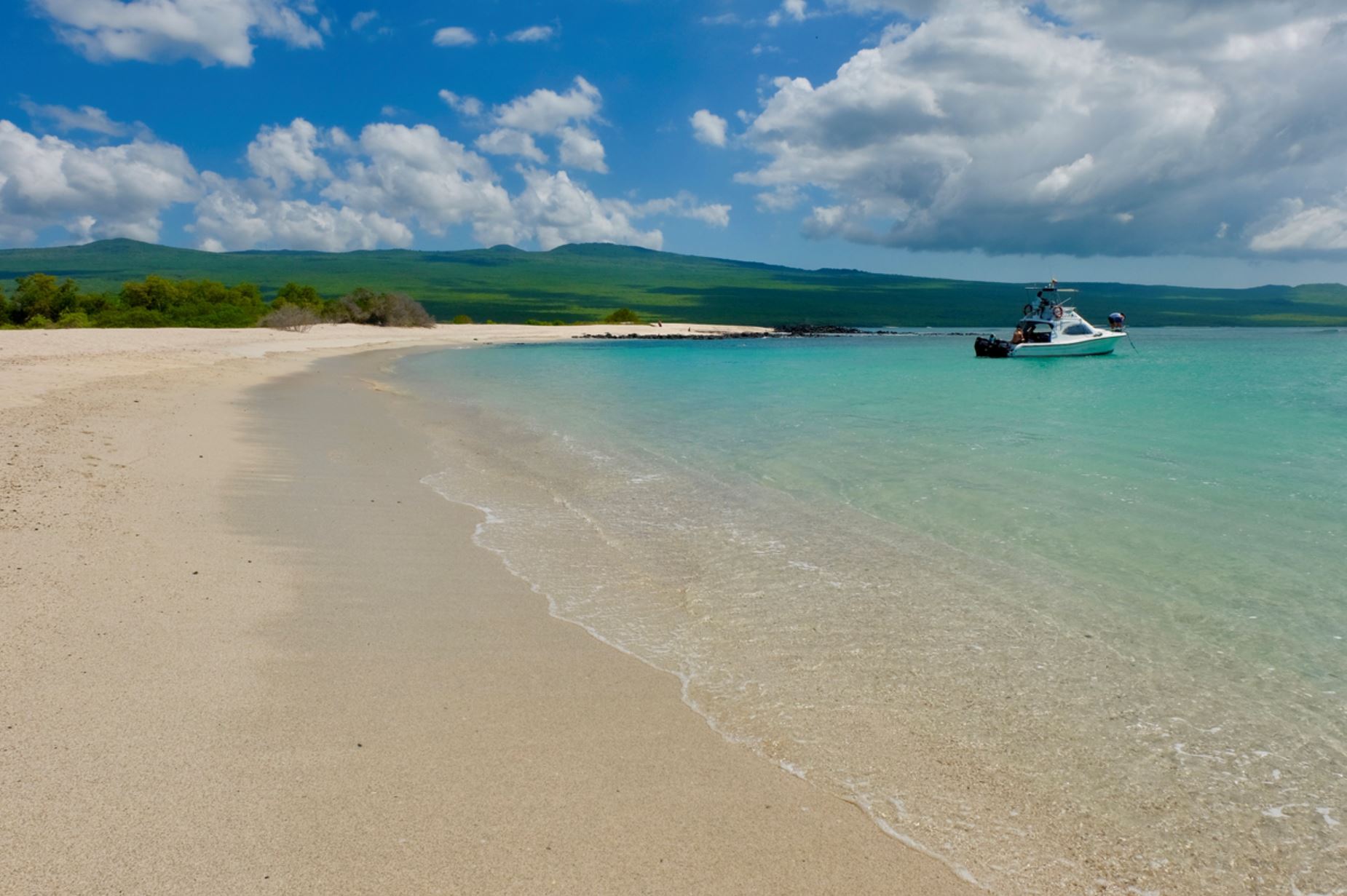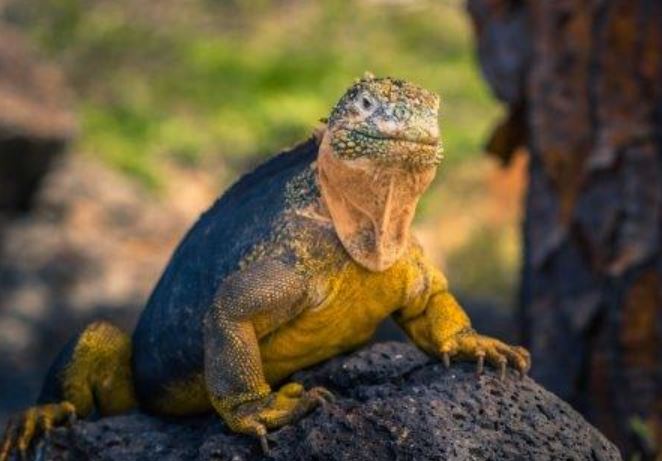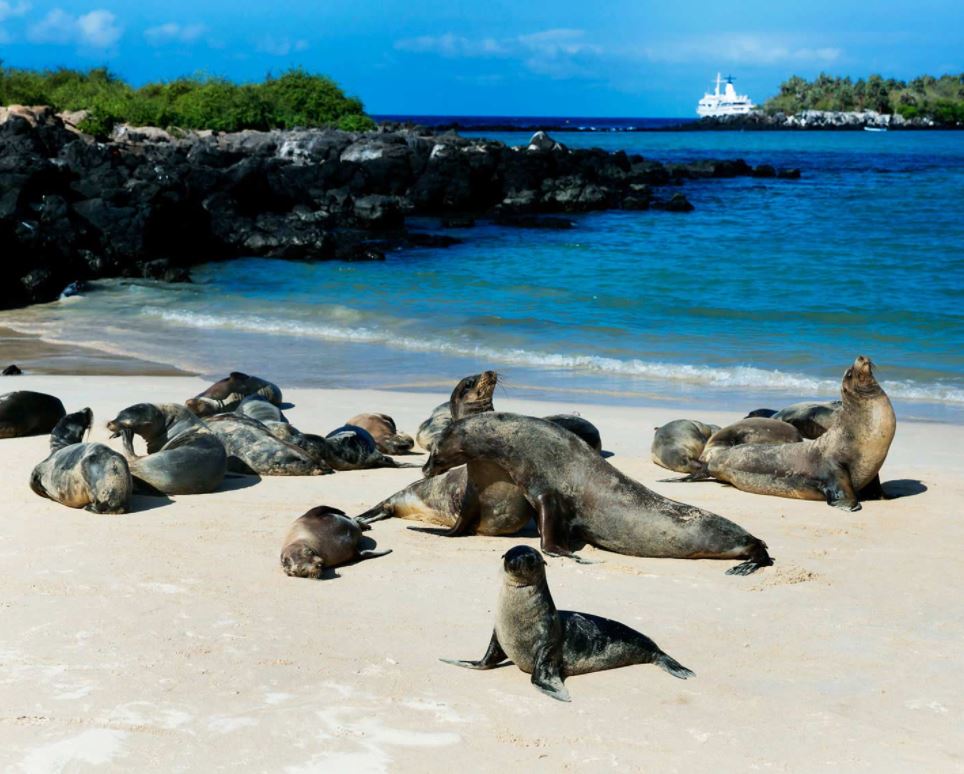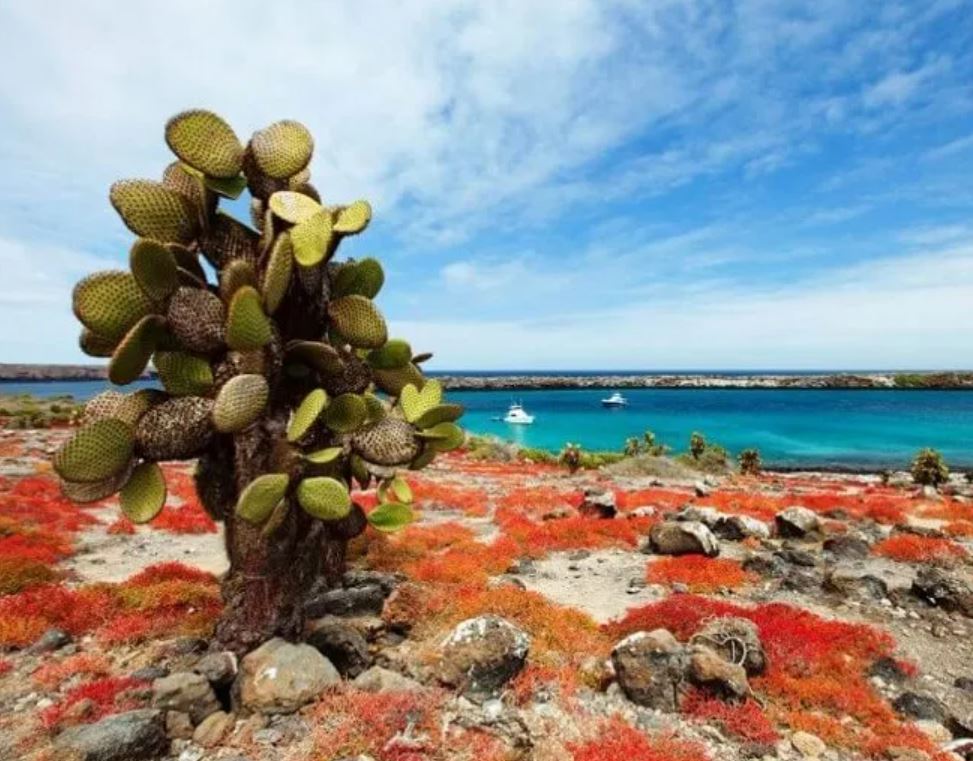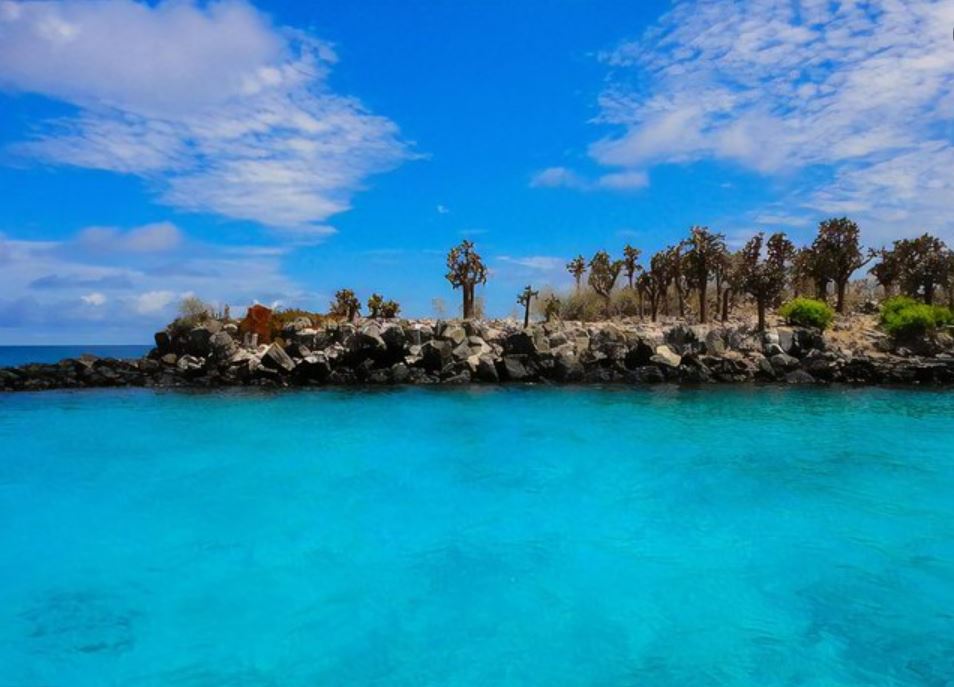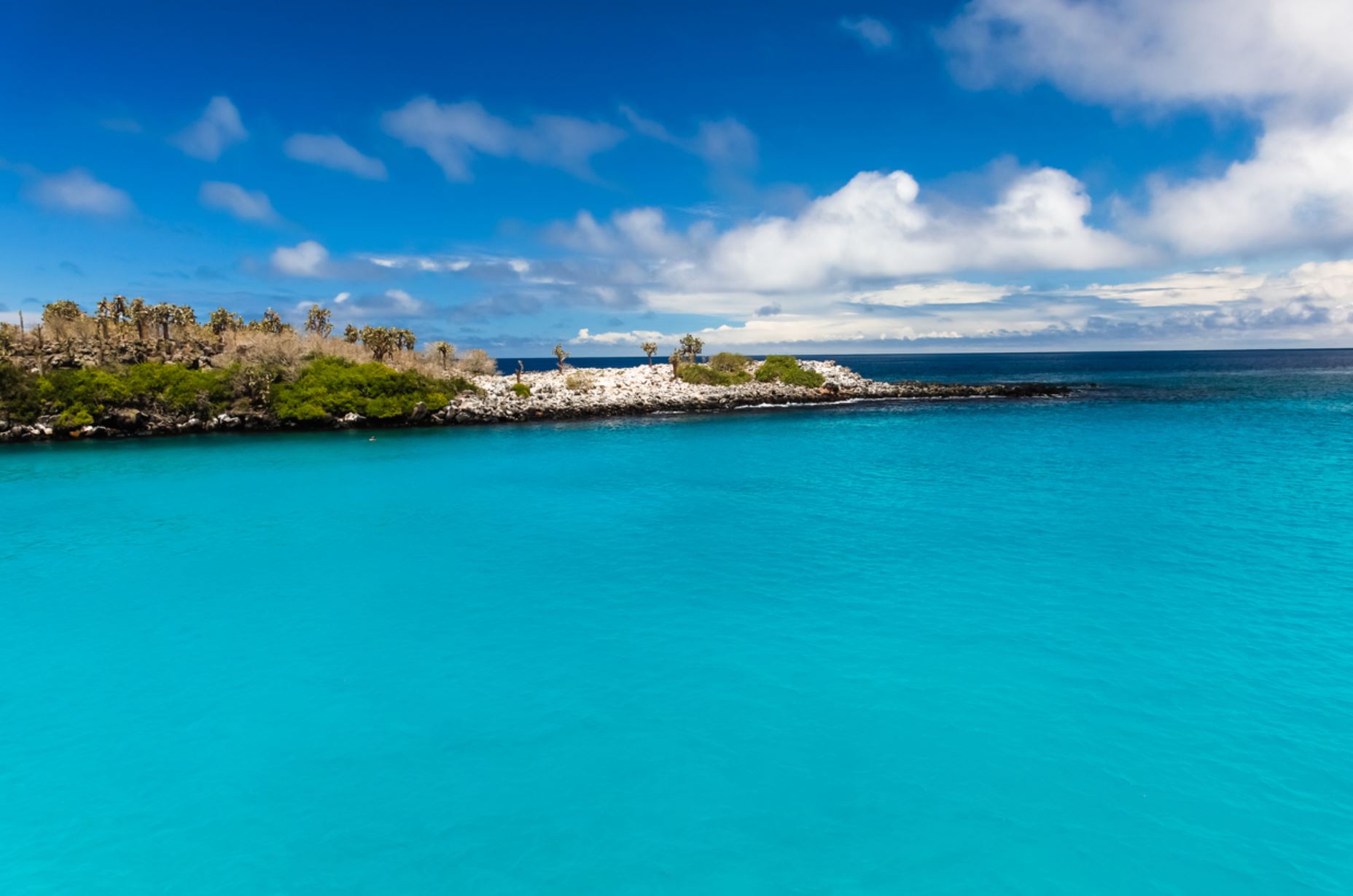Belted Kingfisher
Unmistakable; the only kingfisher recorded in Galapagos. Stocky built, with large, crested head and strong, dagger-like bill. Adults are blue-grey above, with a broad white collar. Underparts mainly white with, in male, a single blue-grey breast-band and in female an additional rufous band across the upper belly, extending to the flanks. Juveniles resemble adults, but have rufous tones to the breast-band.
Behavior:
Perches or hovers over water, plunging head first to catch fish.
Na Category: Land Birds
Number of Species: 49
Endemic Species: 22
In total, 49 species of land birds have been recorded in the Galapagos, 22 of which are endemic to the Islands. Land birds can be divided into 5 categories: Diurnal Raptors, Night Birds, Larger Land Birds, Aerial Feeders and Smaller Land Birds.
Category: Larger Land Birds
Endemic Subspecies: Galapagos Dove
Eight species of larger land birds have been recorded in Galapagos, five of which are resident including one endemic species. The larger land birds can be conveniently divided into three groups: Pigeons & Doves, Kingfishers and Cuckoos.
Kingfishers are small to medium-sized, stocky birds with short legs and necks, large heads and very large, dagger shaped bills, which are used to catch fish. The only species recorded in Galapagos, the Belted Kingfisher, is large with unmistakable plumage.
Animal group: Alcedinidae
Scientific name: Megaceryle alcyon
Animal Average Size: 28–35 cm (11–14 in) in length with a wingspan of 48–58 cm (19–23 in)
Animal Average Weight: 113 to 178 g (4.0 to 6.3 oz)
Where can you find with a little bit luck the Belted Kingfisher in Galapagos:
Santa Fé island
San Cristobal
Pictures
Islands where you can see the animal with a little luck:
San Cristóbal
One of the oldest and closest to the continent, located on the east of the archipelago, which means it is the farthest of the hot spot of all, about 200 kilometers away from it with no volcanic activity. It is formed by four volcanoes bonded together and is the most humid island due to underground aquifers and fresh water flows. The English named it Chatam because of the British Prime Minister William Pitt of Chatam. It holds the biggest fresh water lake of the archipelago called El Junco, located on the south center part of the island about 660m above sea level. San Cristobal is one of the two only places where the Red Footed Booby can be found in a nesting colony in Punta Pitt visiting site.
This island is the capital of the archipelago, Puerto Baquerizo Moreno, with a population of about 7 thousand people. Human development started on the early 1832, firstly on the highlands on a sugar production settlement. An Interpretation Center was developed in town, where visitors can learn about the biological and historic facts that conform the islands.
Charles Darwin Journey on San Cristobal. This is the first Island visited by Charles Darwin, and his first impression of the dry coast he saw was of a deserted and isolated place. He did not find the tropical richness he expected, but he had the chance to collect the first specie that later on would be the start of his Theory of Evolution, the San Cristobal Mockingbird.
Punta Pitt visitor site is one of the two only places where the Red Footed Booby can be found in a nesting colony and offers an amazing red landscape full of Sesuvium, a very special endemic plant specie that turns color depending on the season. It has a magnificent beach formed with Peridot, a sparkly mineral creation that shines green with sunlight.
Cerro Brujo visitor site is the only place in the archipelago where Red Footed Boobies, Nasca Boobies and Blue Footed Boobies are found nesting together.
Tijeretas visitor site is the very first point that Charles Darwin visited on his journey. Not far from the interpretation center, there is a calm water rocky bay, a magnificent snorkel area and view site for nesting Frigate Birds, animal from which the place takes its name, Tijeretas.
Cerro Colorado visitor site on the southwest side of the island holds the facility of the Tortoise breeding Center, an semi natural area built for the purpose of rebuilding the tortoise population of the island and their conservation.
Visitor sites
El Junco Lagoon, Kicker Rock, La Galapaguera Jacinto Gordillo Breeding Center, Interpretation Center Gianny Arismendi , Tijeretas Hill, Lobo island, Pitt Point, Puerto Baquerizo Moreno, Puerto Chino, Witch Hill
Santa Fé
The oldest island of all (4.5 million years), is the result of the uplifting of a layer that previously suffered geological folding even tough recent data suggests it has also had volcanic origins. This island is a very rare formation located in the middle of Santa Cruz and San Cristobal islands, on the south east of the archipelago and it holds a beautiful turquoise lagoon on its bay, an often visited historic anchoring point. It was called Barrington because of the Brithish Admiral.
It is an unpopulated island.
The island with the highest endemism. Due to is geological nature and age; most of the animals on this island are endemic to this only location. Here the Marine Iguana of Santa Fe can be found as well as the Santa Fe Mockingbird, the Santa Fe rice Rat and the Santa Fe lizard.
Animals: frigate birds, blue footed boobies, sea lions, marine iguanas, swallow-tailed gulls, snakes, herons, hawks, sharks, rays.
Plants: giant cactus.
Offering one of the most beautiful and sheltered coves in the islands, home to a number of endemic species including Galapagos Hawk, Darwin’s finches and endemic land iguana.
Visitor sites:
The visitor site Santa Fe is located on the northeast end of the island bearing the same name. We continue walking through an endemic cactus forest as we search for the endemic Santa Fe land iguana, which is the largest in the islands and distinctively paler, and sea lions.
This island is home to a number of endemic species including Galapagos hawk, Galapagos snake, a variety of finches and one of the four species of Galapagos mockingbirds.
Activities: 1 hour 30 min walk / 1 hour deep-water snorkeling
Highlights: Santa Fe land iguana unique in Galapagos, largest cactus of the archipelago.
Mr. Frobeen can give you precise information about the ships.
Mr. Frobeen will be happy to advise you by phone at +49 (0)7633 9399360 or via email info@frobeen.de
If you want to book, what are the payment methods?
The reservation is gratis as an option.
If you want to make an fixed booking, there is to pay a deposit of 20%.
The remaining payment is due 4 weeks before departure. In individual cases, such as diving cruises, other rules apply. Information on request.
- Your payments are insured against bankruptcy!

